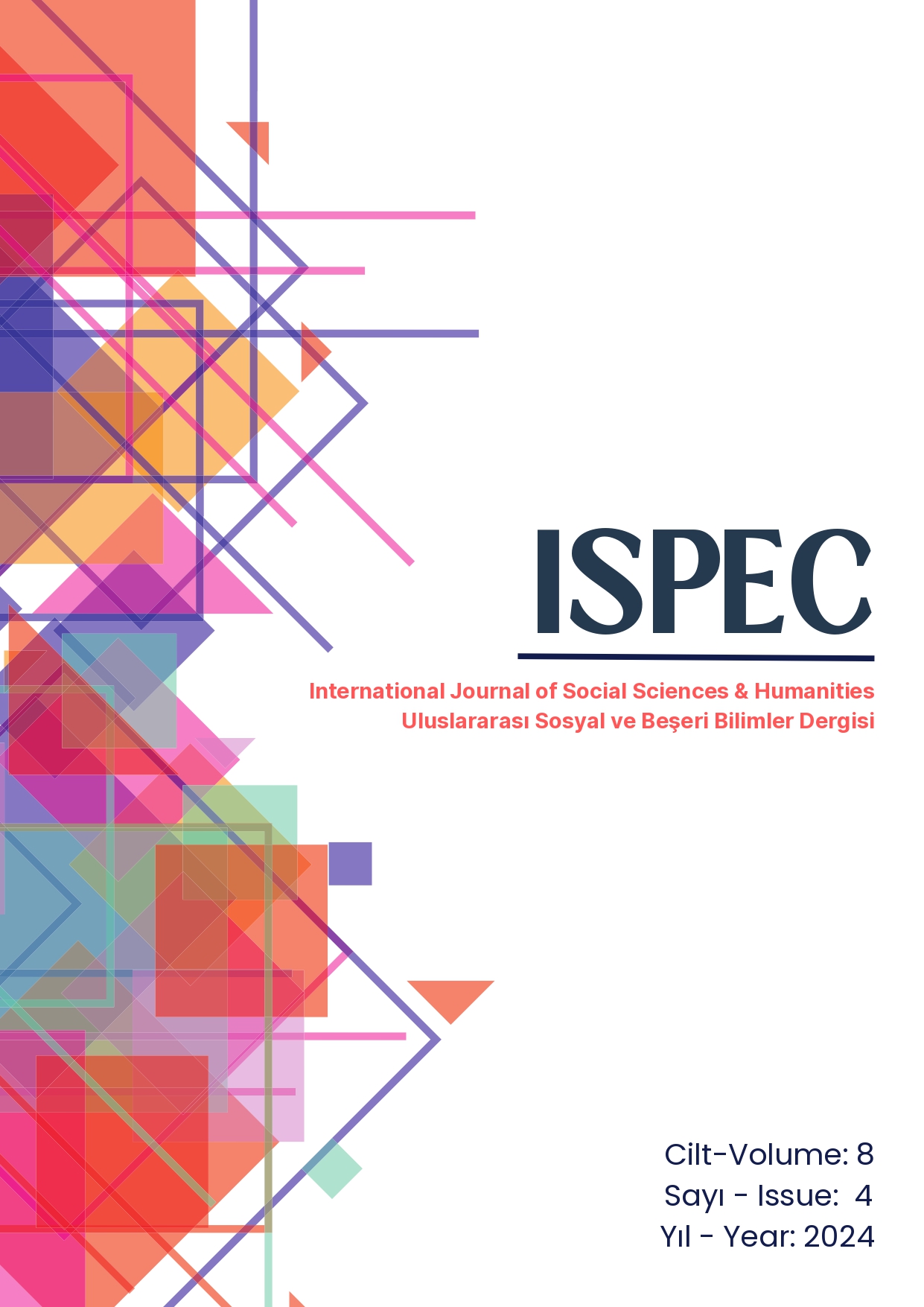The Anatolian Collaboration Model as an Economic Organization Model: A Comparative Analysis with Asian Models
DOI:
https://doi.org/10.5281/zenodo.14501788Keywords:
Rural Development, Cooperative, Imece, Agricultural Production, FarmerAbstract
Today, class popular movements and collective movements are terminologically confused with each other.The emergence of collective modeling with working class movements in Europe Since it occurred, it is seen as against private property as an enemy of private property and capital. The teachings of Karl Marx about socialism were incorrectly applied in Russia during the Bolshevik revolution and attempts were made to forcibly adopt a one-party dictatorship for the people. This idea, which is fed by the theory of evolution, has brought blood and tears to humanity with social darwinism.
In fact, mixed economic modeling has emerged in the Islamic geography. At the beginning of the Karmati movement, equality and justice aimed at a common life, but later it moved away from this goal. But imece culture, which is the common organizational modeling of the Turkish and Turanian civilizations that struggle to exist together in the harsh conditions of the steppe in Central Asia, has appeared as the common denominator of the villagers' common life in all regions of our Anatolia to this day. Hospitality, imece, common product harvest, peace and brotherhood spirit are the most basic expenses of our country in all regions of our main hail. A society bound to each other by an oath of brotherhood for thousands of years, our country has faced social, cultural and economic problems due to our inability to reflect this imece model in agricultural organizations and production units.
After the second world war, the marshall aid and the misunderstanding of mechanized agriculture caused the weakening of imece culture and the weakening of collective consciousness. In this, the weakening of national consciousness with the closure of village institutes and the dominance of capitalist and liberal ideas have played a major role.
Imece cooperative culture comes across as the most beautiful example of the spirit of peace and brotherhood that exists in our Anatolia. This spirit comes across Decently as the most important values that have held us together for centuries.
After our country emerged victorious from the war of independence, it applied the mixed economy-based statecraft model by attaching importance to domestic production and national education.In this process, our country has successfully implemented the mixed economy and statehood model. However, after the second world years, serious mistakes were made in abandoning the statist and mixed economic model and switching to a liberal and planned economy instead.
The adaptation of the Turkish education system to the western education model with the fulbright agreement has revealed various results. The closure of village institutes and the abandonment of the imece cooperative model have brought with them serious problems.
Migration from rural to urban areas has accelerated in Eastern and Southeastern Anatolia due to the equitable distribution of lands and divisions in the inheritance law. For this reason, the increase in criminal and mafia organizations and the culture of ghettoization have become dominant in cities.
In our study, we will investigate the Asian development models and collective modeling applied in the world,the applicability of the imece cooperative model, which is a good example of Turkish and Islamic culture in cooperative and agricultural enterprises. We will compare the reasons for the failure of the Asian collective models and the search for solutions with the imece cooperative model. We will investigate the importance of imec in the development of the most ideal agricultural production model.
References
Akgöz S.Sedat. (2011). Ahilik modelinin Organizasyon Modellerine Etkisi. Kırşehir: Basılmamış Ders Notlar.
Akgöz, S.S. (2023). Ulusal Kalkınma ve Sosyal Barışın sağlanmasında Bask Mondregon Modeli. Organizasyon ve Yönetim Bilimleri Dergisi.
Akgöz S.Sedat, Öztürk Y.Kemal. (2012). Anadolu Kooperatifçilik Hareketinde Baciyani Rum Felsefesinin İzleri. 4.Milletler Arası Ahilik Konferansı, Ahi Evran Üniveristesi, Kırşehir.
Akgöz S.Sedat, Solmaz T. (2015). Ekonomik Bağımsızlık ve Kooperatifçilik. Karabük Üniversitesi Milletlerarası Bildiri (s. 541-559), Türk Kooperatifçilik Kurumu, Karabük.
Arı, F. (2015). Senkretik Bir Gelenek Olarak Karmatilik, Yayınlanmamış Yüksek Lisans Tezi, İstanbul.
Avcu, A. (2009). Karmatiler Doğuşu ve Gelişim Süreci, Yayınlanmamış Doktora Tezi, Ankara.
Bayram M. (2012). Fatma Bacı Baciyani Rum (Anadolu Bacıları Teşkilati). Konya: Nkm Yayıncılık.
Bozbayır, O, Şener, E. (2021). Kapitalist Sistemde Ahilik Arayışı: Bir Yanılgı, AEÜİİBFD, Cilt 5, Sayı 1, Haziran.
Bulut, F. (2010). İslam Komüncüleri Karmatiler, Berfin Yayınevi, İstanbul.
Bulut, F. (1997). İslam Komüncüleri, İslamda Özgürlük Arayışı, Doruk Yayınevi İstanbul.
Candemir, M., Güngör, H. (2002). “Çüy Oblastında Özellestirilen Kolhoz İsletmelerinin Ekonomik Sorunları Çözüm Önerileri”, Manas Üniversitesi Sosyal Bilimler Dergisi, cilt.2, sayı.4.
Çakı, C., Fidan, Y. (2020). “Çin Propagandasında Çin-Tayvan İlişkilerinin Sunumu:
Mao Zedong Dönemi Üzerine İnceleme”, İstanbul Gelişim Üniversitesi Sosyal Bilimler Dergisi, 7 (1), Nisan, İstanbul.
Ersoy, T. (2018). “İsrailli Olmak: Kolektif Bir Kimlik Geliştirmenin Zorlukları”, Türkiye Ortadoğu Çalışmaları Dergisi, cilt.5, sayı.1, Sakarya.
Görkem A. (2015). İşlem Bilgisi ve Kooperatifçilik, Özkan Matbacılık, Ankara.
Sonuç, Y. S. (2017). Kibbut’zun İsrail Siyasetine Etkisine Kısa Bir Bakış, İsrailiyat: İsrail ve Yahudi Çalışmaları Dergisi, Kış, no:1.
Şahinöz, A. (1985). Tüketim Kooparatiflerinde Bunalıma Çözüm Monragon Modeli. Hacettepe Üniversitesi İktisadi ve İdari Bilimler Dergisi , 339-348.
Taşlıgil, N., Şahin, G. (2012). “Kolektif İşletme Tiplerine Tipik Bir Örnek: Kibbutzlar”, Adıyaman Üniversitesi Sosyal Bilimler Enstitüsü Dergisi, yıl.5, sayı.9, Adıyaman.
Turan, M. (2011). “SSCB’de Toprak Mülkiyeti”, Ankara Üniversitesi SBF Dergisi, cilt.66, no.3, Ankara.
Uslu, Z. (2019). Batini Dini yapılarda Döngüsellik, Yayınlanmamış Yüksek Lisans Tezi, Diyarbakır
Ülgen, E. (2021). Esnaf ve Sanaatkarler açısından Pir Ahi Evrandan Geçmişten Günümüze Ahilik. Türk Dili Edebiyatı Dergisi, 447-460.
Yılmaz, G.Gökalp (2020). Goffman’ın Total Kurumlarına Bir Örnek Olarak Kibbutzlar ve Değişen Denetleme Biçimleri, Süleyman Demirel Üniversitesi Fen-Edebiyat Fakültesi Sosyal Bilimler Dergisi, Sayı 49.
https://dijitalhafiza.com/kavramlar-sozlugu/mosav,10.02.2023
Downloads
Published
How to Cite
Issue
Section
License
Copyright (c) 2024 ISPEC International Journal of Social Sciences & Humanities

This work is licensed under a Creative Commons Attribution-NonCommercial-NoDerivatives 4.0 International License.






